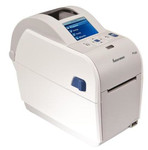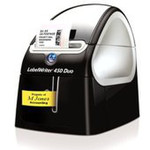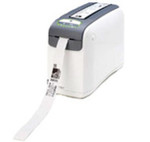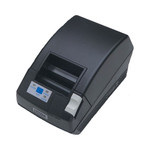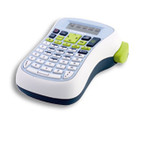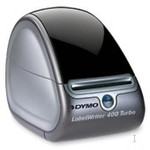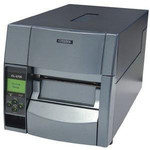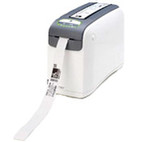Catalog
-
Catalog
- Antiquitäten & Kunst
- Auto & Motorrad: Fahrzeuge
- Baby
- Business & Industry
- Bücher
- Camping & Outdoor
- Feinschmecker
- Garten & Terrasse
- Haushalt & Wohnen
- Haustierbedarf
- Heimwerken & Garten
- HiFi & Audio
- Home, Construction, Renovation
- Household appliances
- Kleidung & Accessoires
- Modellbau
- Musik
- PC- & Videospiele
- Photo & camcorders
- Sammeln & Seltenes
- Spielzeug
- TV, Video, DVD
- Telekommunikation
- Uhren & Schmuck
- Wellness & Beauty
- computers & electronics
- entertainment & hobby
- fashion & lifestyle
- food, beverages & tobacco
- garden & patio
- health & beauty
- institutional food services equipment
- medical equipment, accessories & supplies
- office
- sports & recreation
- vehicles & accessories
- weapons & ammunition
Filters
Search
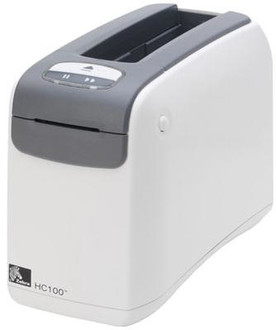
Zebra HC100 Direct thermal 300 x 300DPI Black,White
EAN: 4054318746446
MPN: HC100-300E-1200
🚚 Select the country of delivery:
Delivery from:
Germany
Sale and delivery by:
Where to buy and prices (Advertising *)
On Top
Technical specifications
On Top
Paper handling
| Maximum media length | 558 mm |
|---|---|
| Maximum label length | 0.558 m |
| Maximum label width | 30.16 mm |
| Supported paper width | 30.16 mm |
Performance
| Built-in barcodes | CODABAR (NW-7), Code 128 (A/B/C), Code 39, Code 49, Code 93, EAN13, Industrial 2/5, Interleaved 2/5, MaxiCode, PDF417, POSTNET, QR Code, UPC-A, UPC-E |
|---|
Printing
| Print technology | Direct thermal |
|---|---|
| Print speed | 102 mm/sec |
Ports & interfaces
| Wi-Fi | Y |
|---|---|
| RS-232 interface | Y |
| USB 1.1 ports quantity | 1 |
Power
| Energy Star certified | Y |
|---|
Memory
| Flash memory | 8 MB |
|---|---|
| Internal memory | 16 MB |
Operational conditions
| Operating temperature (T-T) | 40 - 104 °F |
|---|---|
| Storage temperature (T-T) | -40 - 140 °F |
Additionally
| Ethernet LAN connection | N |
|---|---|
| RS-232 port | 1 |
HC100 - Direct thermal, ZPL, 300 dpi (12 dots/mm), 10.16 cm (4 ") (102 mm)/sec, 32-bit RISC, Serial, USB, WLAN 802.11b/g, 1.4kg, White/Black
- Print method: Direct thermal;
- Programming language: ZPL®;
- Construction: Dual-wall frame, impact resistant plastic.
<b>Nebraska Medical Center</b>
The Nebraska Medical Center implemented patient wristbands with 2-D bar codes, and two unique bar codes on each, while reducing the hassle of band creation for nurses.
<b>Great Ormond Street Hospital</b>
Great Ormond Street Hospital for Children NHS Trust has implemented their printed wristband solution to comply with the National Patient Safety Agency (NPSA) Positive Patient Identification directive in the UK. After exhaustive trials and evaluation, the hospital finally chose the Zebra® HC100™ wristband printer with its unique cartridge loading features along with 3rd party 2D bar-code images with special healthcare plastics.
<b>Prague General University Hospital</b>
Zebra wristband solution increases patient safety and medicine administration at Prague General University Hospital.
<b>Thibodaux Regional Medical Center</b>
A closer look at how Thibodaux Regional Medical Center, a 185-bed acute care facility in Thibodaux, La was able to better support bedside medication verification by replacing paper bar code labels with a more durable, easy-to-scan solution in the Zebra HC100™ Patient I.D. Solution.
<b>Valencia Hospital</b>
As science and technology progresses, one of the biggest challenges is to reduce hospital errors as much as possible. As soon as the patient is admitted to hospital, the various processes and the intervention at different levels by medical professionals (from paramedics, nurses and doctors, to administration and laboratory staff), all increase the risk of mistakes being made. For this reason, automatic patient identification (patient ID) has become significantly important in hospitals, where it succeeds in reducing errors virtually to zero.
<b>Kalispell Regional Medical Center</b>
Montana hospital improves workflows and patient safety with Zebra's wristband solution.
- Programming language: ZPL®;
- Construction: Dual-wall frame, impact resistant plastic.
<b>Nebraska Medical Center</b>
The Nebraska Medical Center implemented patient wristbands with 2-D bar codes, and two unique bar codes on each, while reducing the hassle of band creation for nurses.
<b>Great Ormond Street Hospital</b>
Great Ormond Street Hospital for Children NHS Trust has implemented their printed wristband solution to comply with the National Patient Safety Agency (NPSA) Positive Patient Identification directive in the UK. After exhaustive trials and evaluation, the hospital finally chose the Zebra® HC100™ wristband printer with its unique cartridge loading features along with 3rd party 2D bar-code images with special healthcare plastics.
<b>Prague General University Hospital</b>
Zebra wristband solution increases patient safety and medicine administration at Prague General University Hospital.
<b>Thibodaux Regional Medical Center</b>
A closer look at how Thibodaux Regional Medical Center, a 185-bed acute care facility in Thibodaux, La was able to better support bedside medication verification by replacing paper bar code labels with a more durable, easy-to-scan solution in the Zebra HC100™ Patient I.D. Solution.
<b>Valencia Hospital</b>
As science and technology progresses, one of the biggest challenges is to reduce hospital errors as much as possible. As soon as the patient is admitted to hospital, the various processes and the intervention at different levels by medical professionals (from paramedics, nurses and doctors, to administration and laboratory staff), all increase the risk of mistakes being made. For this reason, automatic patient identification (patient ID) has become significantly important in hospitals, where it succeeds in reducing errors virtually to zero.
<b>Kalispell Regional Medical Center</b>
Montana hospital improves workflows and patient safety with Zebra's wristband solution.
Similar offers
On Top
-
Payment Methods
We accept:







